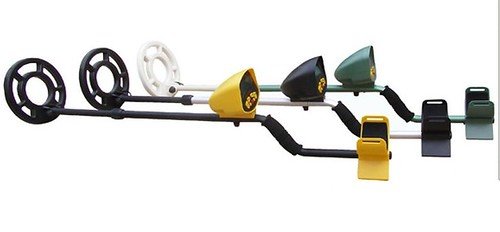Gold Bugs have a single point agenda – locate gold. And after that, locate more gold.
Gold Detecting serves as an excellent hobby and pastime which can engage the whole family. Locating any object or nugget of gold can be an experience worth cherishing; it can make a fun day at the beach looking for buried treasures and transform a day into one of sheer ecstasy. There are several websites that are available for reference which exist with the sole aim of helping you to select the right gold detector based on the vast experience of veteran metal detector enthusiasts.
Most gold detectors, like any metal detector have the same basic anatomy; a typical metal detector is light-weight and consists of only a few parts as listed below:
• An optional Stabilizer is used to keep the unit steady as you sweep it back and forth
• The Control box that contains the circuitry and controls, speaker, batteries and the microprocessor
• An adjustable Shaft that connects the control box and the coil
• A Search coil which is the part that actually senses the metal; it is also known as the “search head,” “loop” or “antenna” at times
Metal Detectors use a variety of technologies. Some of these are the VLF or Very Low Frequency technology, the PI or Pulse Induction technology and the BFO or Beat Frequency Oscillator technology. More popular among these is the VLF technology, which is what is used by gold detectors.
If a gold bug doesn’t fully understand how their gold detector works, potentially they could be missing gold finds and nuggets. Metal detectors work on the principle of conductivity and all metal objects, whether they contain iron or not, are conductive; in other words, heat and electricity can flow through them.
A gold detector creates an Electro-Magnetic Field which penetrates into the ground; when this field comes across a conductive metal object, the search coil senses a charge in the field, and thereby detects the object buried below. A signal is then sent to the control box, which triggers a loudspeaker, meter or headphones and emits a noise, alerting the operator of a potential object. Metal detectors react based on the surface area of an object and not its mass; the larger the surface area, the deeper you will be able to detect an object. For instance, a coin lying flat will be detected at a far greater depth than the same coin standing on edge. In addition to metals, a detector may react to non-metallic substances like iron ores, magnetic non-conductive minerals and beach salts known as mineralized ground which may cause a detector to produce a false signal so called ground noise. This can be eliminated by making use of the ground balance function.
Several brands of gold detectors are available today at a wide range of prices. It’s needless to say that the more professional gadgets do cost more; it is up to one to settle for one that best suits one’s level of interest in the hobby.




